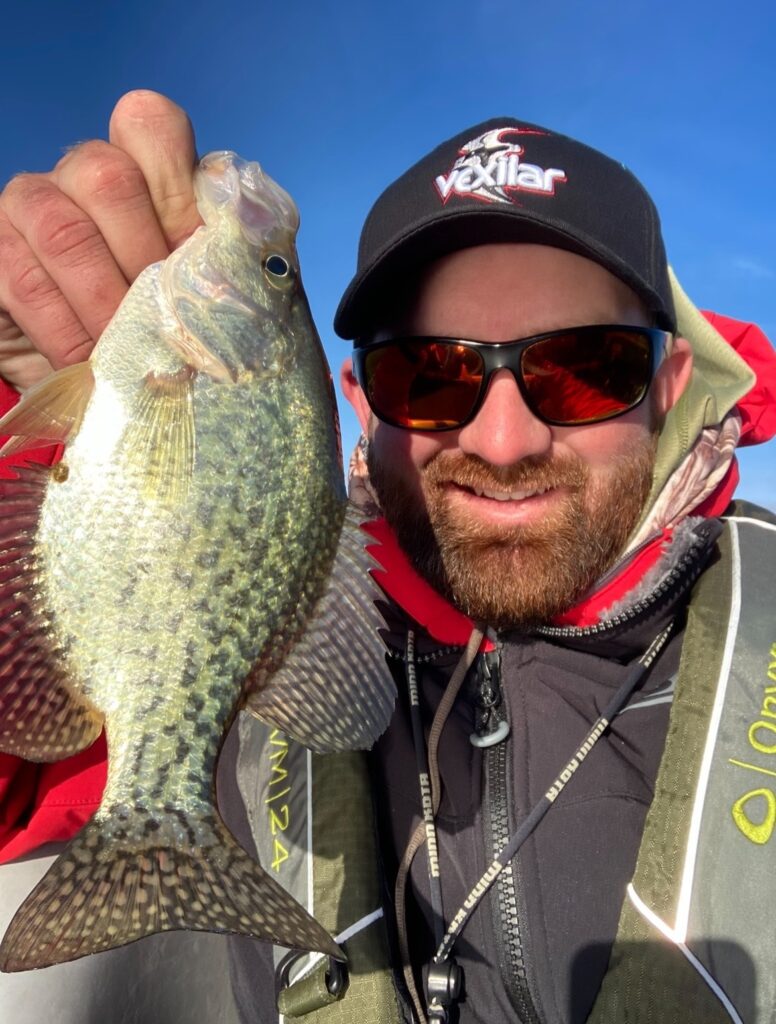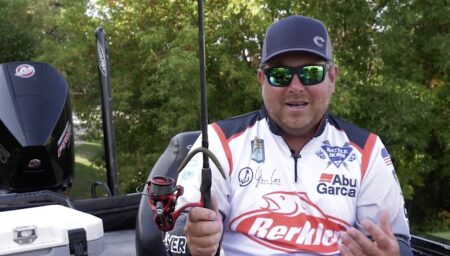As we transition into the fall, many crappie will pull out and suspend over soft bottom basin areas. Often, the exact same locations you can expect to find fish during midwinter. Minnesota based fishing guide, Matt Klug, spends a lot of time chasing fall crappie in the Alexandria region of central Minnesota and explains that while the lakes can vary in regard to basin depth, the pattern usually holds for most lakes as we move later into the fall.
“Some lakes might have a basin of fifteen feet while other lakes in my area might have a basin that is forty-five or fifty feet deep. These soft bottom basins just accumulate crappie as the fall progresses,” stresses Klug. Typically, these fish can either be on the transition where the basin starts or will be roaming out over “no mans land.”
Finding fish is all about using electronics. For finding fish fast, Klug likes to cover water fast with 2D sonar often at speeds of 20 miles per hour. Typically, these fish will be schooled up and suspended off the bottom, often halfway down in the water column. Look for schools of fish but remember that often, the biggest schools of crappie that don’t move much are often small fish. What is important to note however is that the smaller schools of fish that are often bigger crappie are usually near the small fish. The big schools of small fish slow you down. Use this to your advantage when trying to break down big chunks of water. Basins can be intimidating so trust your electronics.
On many of these popular inland Minnesota lakes, Klug finds that he simply catches more crappie in the fall with finesse and he takes an unorthodox approach to catching fall crappie. “I actually find that these fish can be kind of fussy at times and sometimes won’t hit bigger, aggressive presentations and I also find that I will often catch fewer fish if I move the jig too much,” explains Klug.
For fussy fall crappie, Klug takes a page out of the ice fishing playbook by using softer, noodle tip rods with a backbone like a thirty-six-inch Dead Meat Rod and uses ice fishing rods with three-to-four-pound test and small tungsten ice fishing jigs tipped with a small, soft plastic. Ice fishing gear in the boat might seem like overkill but in regard to the patterns, mood of the fish and location… the only difference is ice when you get into late fall.

For getting down to suspended fish fast, Klug will use arm lengths to measure distance quickly. For fish that are closer to the bottom, Klug notes that each reel turn on a small ice fishing reel picks up about a foot and a half of line. Klug also notes that he often does best by simply laying the rod on the gunnel of the boat and hanging the jig over the side without holding the rod. Using spot lock to stay over the top of fish, he will often use the trolling motor to burst ahead five feet at a time. The five-foot increments cause the jig to rise and swing through the fish before settling and this often triggers crappie to bite, especially when the fish are turned off or difficult to catch. This hang below the boat, do nothing strategy where the trolling motor is used to control the presentation is deadly in the fall with small jigs and plastics.
Klug also notes that while the bigger schools are often made up of huge numbers of small fish and that these small fish might not move much, the bigger crappie are often roaming in much smaller packs and move much more around the basin… as noted above often in close proximity to the numbers of small fish. This is where Klug likes to use forward facing sonar to look for these smaller moving packs of fish and to stay on top of those fish.
Klug’s fall basin crappie fishing formula is unorthodox with the ice fishing rods and tackle but is deadly. Catching a big crappie with an ice rod and three-pound test is also a lot of fun.
For more crappie fishing tips be sure to visit our panfish archive here.




